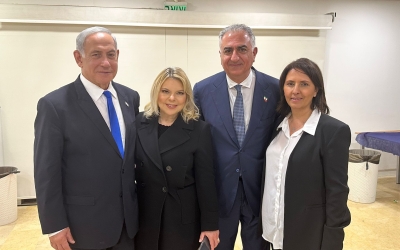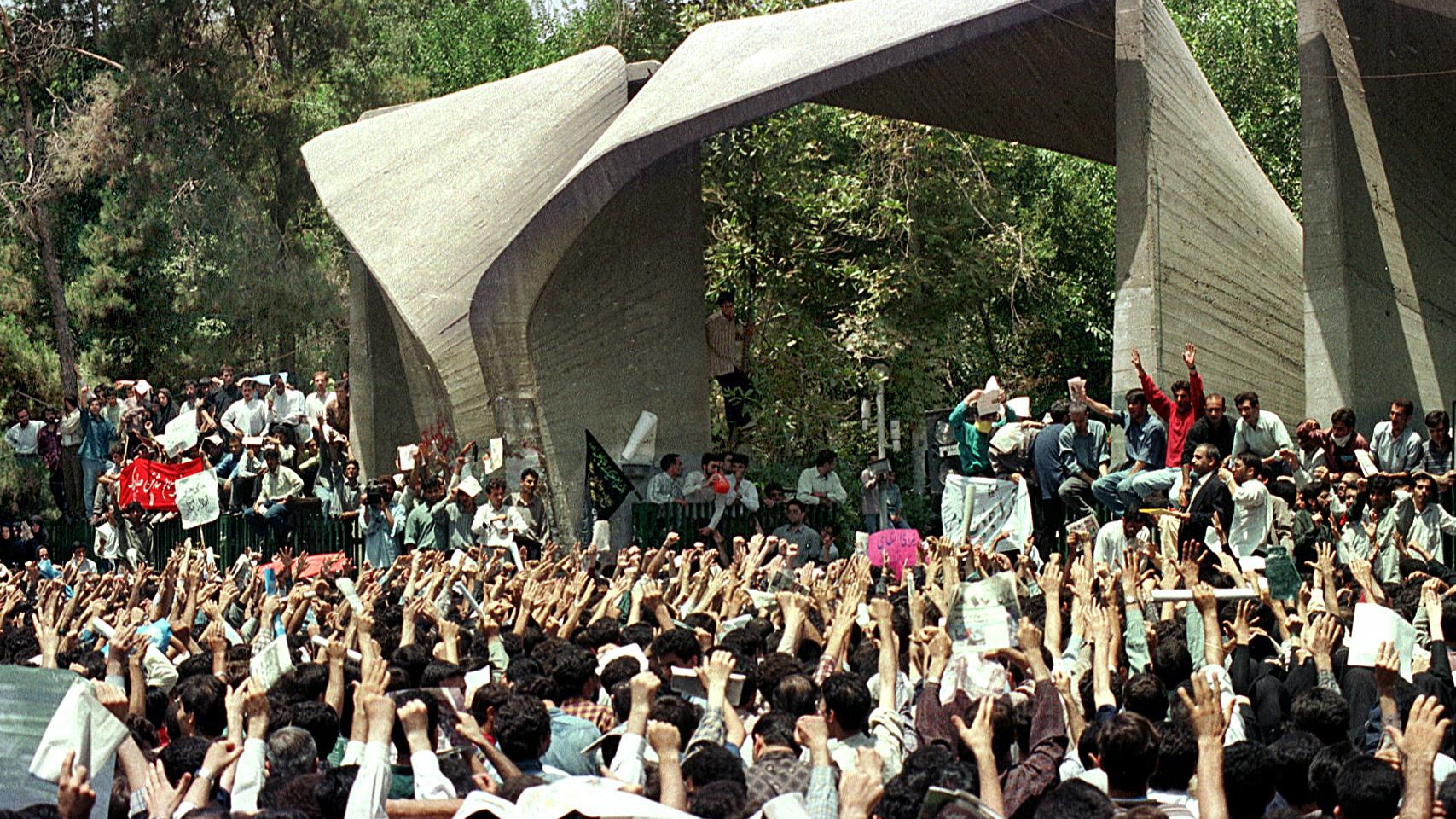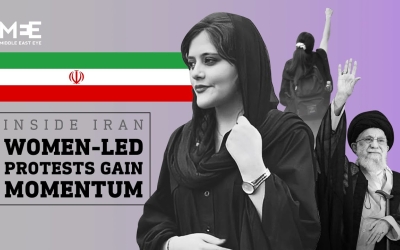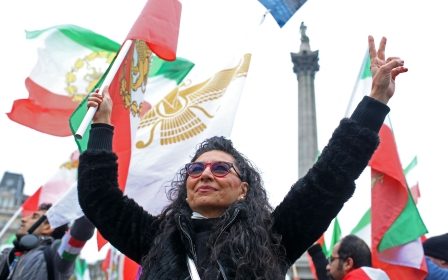Iran: Seventy years on from the coup driven by the West, Iranians are still suffering

In June, I turned 72, and in August, we Iranians marked the 70th anniversary of the coup conspired by British intelligence spies and their counterparts in the CIA, dismantling the prospect of democratic governance in my homeland.
Every time I think of that pernicious fact, a line from Frantz Fanon's The Wretched of the Earth almost immediately comes to mind: "It so happens that when the native hears a speech about western culture he pulls out his knife - or at least he makes sure it is within reach."
The UK under Prime Minister Winston Churchill and the US under President Dwight D Eisenhower had a malicious design on Iranian oil and its strategic significance. They staged a military coup in 1953 to overthrow the government of the democratically elected Prime Minister Mohammad Mosaddegh and bring back to power their stooge who had run away to Europe.
Fine, I have sometimes thought. Realpolitik. But on top of that, we need to nod in enthusiastic approval during nauseating lectures about "western democracy"!
New MEE newsletter: Jerusalem Dispatch
Sign up to get the latest insights and analysis on Israel-Palestine, alongside Turkey Unpacked and other MEE newsletters
How dare they? How dare anyone be so cavalier about an entire nation and its historic destiny. And what exactly are we to do with American politicians like Barack Obama, or Hillary Clinton, or Madeline Albright's public admission that the US did what it did?
Historical record
Seventy years ago, on 19 August, Iranians in and out of their homeland were victims of a treacherous coup that the US and UK plotted and executed against their country.
Though there were plenty of Iranians recruited in and for that fateful event, from military officers to members of the clergy and some of the royal family too, the coup was organised by a handful of British and American spies who thought they were protecting their governments' economic and strategic interests against the spread of communism.
There is no scarcity of evidence of the coup, but in the era of 'alternative facts', the delusional Iranian monarchists could not care less about reality
Sober historians like Ervand Abrahamian have, in far more balanced prose, thoroughly documented the US and UK's careful planning and execution of the plot to topple Mosaddegh's government for both access to Iranian oil and the country's strategic significance during the Cold War.
Before Abrahamian, another careful historian, Steven Kinzer, in his equally detailed documentation, mapped out the event in precise and thoughtful prose.
Other scholars like MJ Gasiorowski, in his crucial essay "The 1953 Coup D'etat in Iran", had also documented the event.
One of the most detailed accounts of the coup was by the CIA itself, a document that the New York Times published in 2000 for the whole world to read. There is no scarcity of evidence. But after Donald Trump and his doctrine of "alternative facts", the delusional Iranian monarchists could not care less about reality.
Bogus Pahlavi revisionism
There have been times over the last quarter of a century when I had thought that, because of their social uprisings, Iranians were delivered from the traumatic memories of the 1953 coup.
But since the Zhina uprising began last September, a group of psychotic monarchists resurfaced in a concerted and vulgar online effort to rewrite recent Iranian history. They either completely deny there ever was a coup or twist and turn its reality in a way that restores legitimacy to the defunct monarchy. The world therefore needs to refresh its memory.
After that fateful coup, Iranian history unfolded apace with the events and impact of that day paramount on everyone's mind. The June 1963 uprising led by Ayatollah Khomeini gave new revolutionary momentum to the post-Mosaddegh era as the first serious challenge to the shah's regime.
The Islamist faction of the resistance to the shah's autocracy was now in full swing, while the Marxist Tudeh Party and the anticolonial nationalists were in retreat.
Though small in scale, the Siahkal uprising of February 1971 was the most serious guerrilla operation against the Pahlavi state after Mosaddegh's anticolonial nationalism of the 1950s and Islamism of Khomeini in the 1960s.
Led by the Marxist Organisation of Iranian People's Fedai Guerrillas (OIPFG) near Siahkal in Gilan, the uprising marked the birth of a new leftist momentum. An Islamist version of the People's Fedai Guerrillas was now equally active as the Mojahedin-e Khalq of Iran (MEK) before they degenerated into a treasonous cult that collaborated with Saddam Hussein against their own homeland.
Meanwhile, radical thinkers like Ali Shariati, Mahmoud Taleqani and Morteza Motahhari were adding further momentum to the Islamist cause.
The Islamist takeover
The cumulative effect of all these events ultimately converged during the Iranian revolution of 1977-1979 when the Islamists, the Marxists and nationalists gathered around a singular mission to topple the Pahlavi regime. Ayatollah Khomeini's move from Iraq to a suburb of Paris suddenly gave him the added momentum of being billed as "the leader" of this revolution.
After the shah left the country in January 1979, with Ayatollah Khomeini returning the following month, the revolutionary momentum was already well underway and the first massive uprising of Iranian women against mandatory veiling on 8 March 1979 marked the sustained presence of all revolutionary forces against Khomeini's Islamism.
Khomeini and his lieutenants knew that they were not the leaders of this revolution and that the grassroots uprising was far more pluralistic and effervescent. They needed a historic coup to claim it all.
The American Hostage Crisis of 1979-1981 became the conduit for repressing all the oppositional forces and consolidating the Islamist regime. A group of Islamist students, identical in their fanaticism with their Afghan counterparts, the Taliban (literally students), took over the US embassy. Ayatollah Khomeini took full advantage of the event, prolonging it for 444 fateful days to crush the non-Islamist opposition forces.
Before the American hostages, who had served their political purpose of consolidating the Islamist regime, were released in January 1981, the Iran-Iraq war of 1980-1988 had already begun. Instigated by the US and its European and regional allies, it was executed by Saddam Hussein with the full support of other Arab regimes.
But Khomeini used the same event to further repress non-Islamist forces inside Iran.
Universities were purged, political parties were banned, cultural revolutions were launched, and mass executions of political prisoners took place. An entire cemetery, Khavaran, near Tehran, became the monument to these pernicious atrocities of the Islamist regime.
Democratic uprising
The Reform Movement of 1997-2000, led by former President Mohammad Khatami, gave a potent indication of a defiant nation, especially among the younger generations. While the leaders of the Reform Movement used the occasion to legitimise and consolidate the ruling Islamist regime, defiant Iranian youths were after much more radical changes.
The 1999 student protests that soon followed Khatami's election were among the earliest signs that the reform movement was too slow, too little, and too late.
Less than a decade later, what commenced in the June 2009 presidential election - and was eventually dubbed the Green Movement - was the clearest indication of the revolutionary potential that manifested in the form of a civil rights movement.
The Arab Spring of 2010-2012, particularly the inspirational Egyptian revolution, gave a larger regional context to democratic uprisings in the Arab and Muslim world. In Iran, the 2018 demonstrations, followed by the 2019 price hike protests, paved the way for the 2022 Zhina uprising.
The end result is very obvious: the coup of 1953 was a reactionary military takeover of the democratic aspirations of a nation by US and UK intelligence forces in collaboration with the shah’s army.
After that fateful treachery, two internal reactionary forces - the ruling regime and now the belligerent monarchists - have been enabled and empowered on two opposite sides of Iranian political culture.
Caught in the middle is any serious challenge seeking to overcome that fateful event and the reactionary forces it unleashed.
The views expressed in this article belong to the author and do not necessarily reflect the editorial policy of Middle East Eye.
Middle East Eye delivers independent and unrivalled coverage and analysis of the Middle East, North Africa and beyond. To learn more about republishing this content and the associated fees, please fill out this form. More about MEE can be found here.








